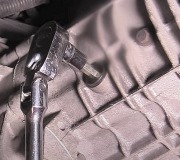The typical service involves dropping the pan, replacing the filter, and about 4 quarts of fluid that splashes out when the pan is pulled off. There is no separate gasket. A bead of gasket sealer is used on the pan flange.
Due to the delicate nature of all manufacturer's transmissions, it is now common to have them flushed with special equipment. This involves adding a can of concentrated detergent, driving for a day or two, then pumping in new fluid to push 100 percent of the old fluid out. A can of seal conditioner may be added too. Some systems do not require removing the pan so the filter isn't replaced either. They work by pumping new fluid through the cooler lines at the radiator.
Some procedures involve running a lot of new fluid through the transmission. About half washes it out and the other half is what stays in at the end.
On very rare occasions much of the clutch plate material may be flaked off and circulating with the old fluid. That grit can damage lip seals in the clutches or cause valves to stick, but it can help the worn clutch plates to grab and stay engaged too. Any flush service can remove that grit and lead to slipping problems soon. That happens very seldom and could be a coincidence or those could have been transmissions that already had a problem and the owner thought a flush would solve everything. Of course when the problem gets worse, as it would have done anyway, the owner blames the last person who worked on the vehicle and the procedure they performed.
My personal recommendation is to just remove the pan to replace the filter and half of the fluid. There are enough seal conditioners in the four new quarts of fluid to do the job until the next scheduled filter change. There are no adjustments so the drain and fill only takes about an hour.
Caradiodoc
Wednesday, February 9th, 2011 AT 1:40 AM



